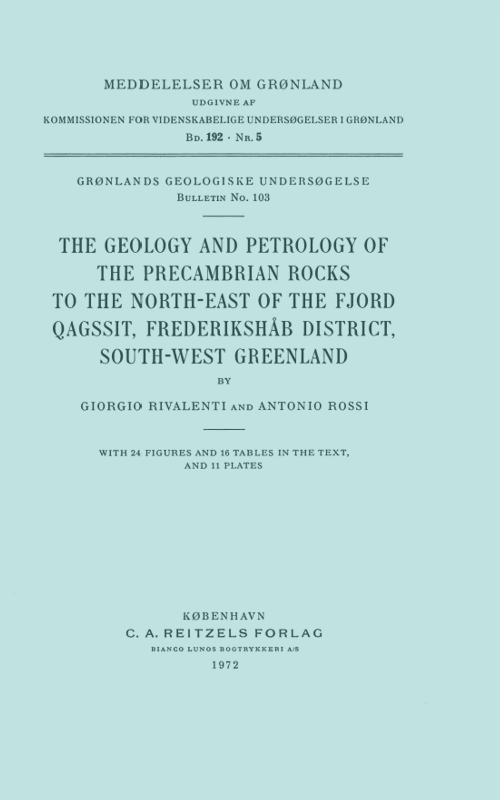The Geology and Petrology of the Precambrian Rocks to the North-East of the Fjord Qagssit, frederikshåb District, South-West Greenland.
DOI:
https://doi.org/10.7146/mog.v192.150070Abstract
The area consists of migmatitic gneisses (with related pegmatites) containing small inclusions and larger concordant layers of unmigmatised rocks (mainly represented by amphibolites, metasediments and ultramafics), and a few discordant amphibolite dykes. The petrography of the various lithotypes is described and their petrogenesis discussed. The following metamorphic history is proposed: 1) an increase in metamorphic grade to the biotite-almandine-cordierite subfacies of the low hornblende-granulite facies, shown only by a few relic assemblages, followed by 2) retrogression to within the almandine-amphibolite facies. Migmatisation (quartz dioritisation or granodioritisation) started in the low hornblende-granulite facies and reached its maximum in the upper almandine-amphibolite facies. A general microcline blastesis and formation of microcline-rich mobilisates is ascribed to the medium to low almandine-amphibolite facies. Further retrogression to epidoteamphibolite or greenschist facies is only local and weak. Several generations of post-orogenic basic dykes intersect the gneisses. Structurally, five phases of ductile deformation and three phases of brittle deformation are distinguished, and the relationship between deformation and metamorphism tentatively established. The metamorphic and structural events are mostly pre-Ketilidian

Downloads
Published
How to Cite
Issue
Section
License
Coypyright by the authors and the Commision for Scientific Research in Greenland. No parts of the publications may be reproduced in any form without the written permission by the copyright owners.

